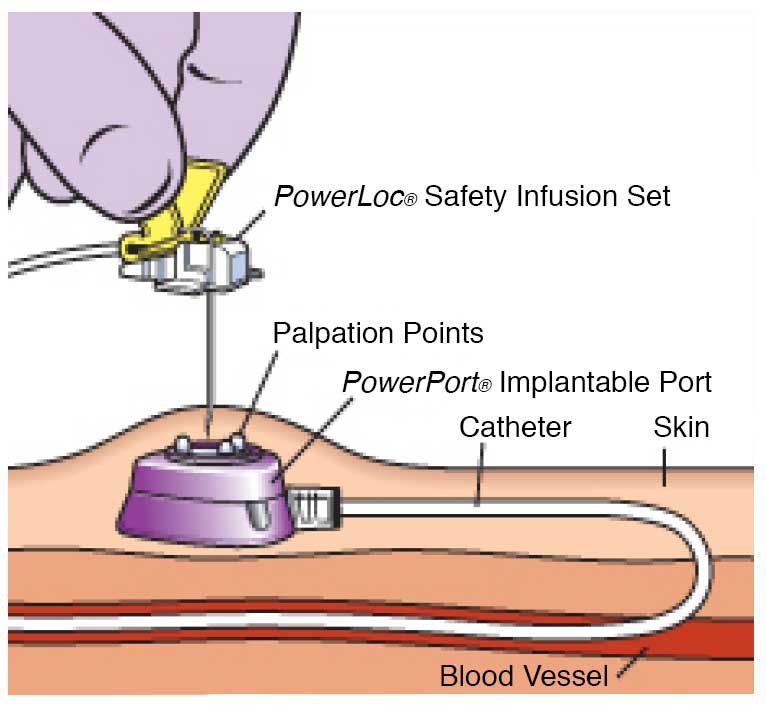Portocaths
Home » Portocaths
Portacaths (Implantable Device)
Portacaths are recommended when you require frequent administrations of intravenous fluids or medications eg chemotherapy, plasma exchange, etc.
The device is implanted completely under your skin. The port section is implanted under the skin on your chest wall by making a small incision. The catheter portion is then tunnelled under the skin to the base of your neck where it is inserted into the jugular vein; the tip is advanced until it lies just above the heart. The position of the catheter tip is checked by the use of an X-ray. The whole system is then filled with Heparin saline solution to prevent the formation of blood clots within the system. The incision is then closed with dissolvable sutures.
Portacaths can be left in place for months or even years.
Insertion
- Usually done as a day case under General anaesthesia or
Local anaesthesia - Can be performed both in the operating theatres or in the Cathlab. The procedure takes approximately 45 minutes
- The right side is usually preferred
- The port is suitable for use immediately after its insertion.
- You may have some pain or discomfort as the local anaesthetic wears off. You will require simple painkillers for 2 days
- Bruising at the site is common
- Infection is rare but is difficult to treat by antibiotics. It usually requires removal of the port and re-insertion at a different site once the infection settles. Antibiotics are given at the time of the insertion to minimise this risk
Removal
- Usually done as a day case under local anaesthesia. The procedure takes about 20 minutes
- Usually performed by reopening the same scar created during its insertion
- The site is closed with dissolvable sutures
- The site is glued with medical glue and no dressing is usually required

